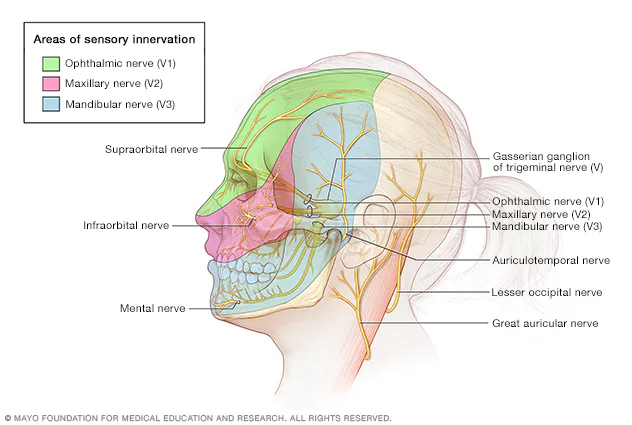- Purna Swaraj Declaration at Lahore (1929)
- Salt March to Dandi (1930), Salt Satyagraha
- Women, students, peasants join en masse
- Gandhi-Irwin Pact (1931): Second Round Table Conference
- Movement resumes post failure, repressed brutally
1. Civil Disobedience Movement (1930–1934)
Historical Context
- Colonial Exploitation: By the late 1920s, British colonial rule had become increasingly oppressive. Economic policies, such as the salt tax, land revenue taxes, and the drain of wealth to Britain, had impoverished the Indian population. The British also imposed strict controls on the press and political activities, stifling dissent.
- Political Climate: The Indian National Congress (INC) had been advocating for greater autonomy and eventually complete independence. The Simon Commission, sent to India in 1927 to propose constitutional reforms but without any Indian representation, was widely boycotted and further fueled anti-British sentiment.
Key Events
- Purna Swaraj Declaration: In December 1929, the INC adopted the goal of “Purna Swaraj” or complete independence at the Lahore session.
- Salt March to Dandi: On March 12, 1930, Gandhi began the Salt March from Sabarmati Ashram to Dandi, breaking the salt laws and inspiring widespread civil disobedience.
- Widespread Participation: The movement saw massive participation from various segments of society, including women, students, and peasants.
- Repression: The British government responded with severe repression, including arrests, police brutality, and martial law. Thousands of protesters were arrested, and many were injured or killed in clashes with the police.
Impact
- Moral and Political Pressure: The movement put significant moral and political pressure on the British government, leading to the Gandhi-Irwin Pact.
- International Attention: The movement attracted international media attention, which put additional pressure on the British to negotiate.
- Economic Disruption: The widespread acts of civil disobedience disrupted British economic and administrative systems, weakening their control.
- Social Change: The movement challenged traditional social norms and hierarchies, promoting a sense of national unity and collective action.
2. Purna Swaraj Declaration at Lahore (1929)
The Purna Swaraj Declaration, formally adopted during the Lahore Session of the Indian National Congress in December 1929, marked a pivotal moment in India’s struggle for independence from British colonial rule. This declaration not only reiterated the demand for complete independence (Purna Swaraj) but also set the stage for a more assertive phase of resistance against British authority. Below is a detailed structural explanation of the Purna Swaraj Declaration:
Historical Context
- Background of Nationalism : By the late 1920s, the Indian National Congress had gradually shifted its focus from seeking constitutional reforms to demanding full independence. The dissatisfaction with the Government of India Act 1919 and subsequent limited concessions fueled this shift.
- Lahore Session (1929) : Held from December 26 to December 31, the session was presided over by Jawaharlal Nehru. It was attended by prominent leaders who were increasingly frustrated with British policies.
Key Objectives of the Declaration
- Complete Independence : The declaration explicitly stated that the Congress aimed for complete independence from British rule, rejecting any form of dominion status or partial autonomy.
- Civil Disobedience : Alongside the demand for independence, the declaration authorized a program of civil disobedience as a means to achieve this goal, demonstrating a commitment to active resistance.
The Actual Declaration
- Text of the Declaration : The resolution proclaimed that “it is the inalienable right of the Indian people to be free” and declared that the Congress would work towards achieving complete independence.
- Symbolism of the Date : The declaration was made on January 26, 1930, which later became celebrated as Republic Day in India, symbolizing the commitment to self-governance.
Impact and Significance
- – Mobilization of Masses: The declaration galvanized widespread support across India, encouraging mass participation in the freedom struggle. It inspired various movements and protests against British rule.
- – Civil Disobedience Movement : Following the declaration, the Civil Disobedience Movement was launched in March 1930, starting with the famous Dandi March led by Mahatma Gandhi, which further escalated the struggle for independence.
International Context
- -Global Influence: The declaration reflected a broader trend of anti-colonial movements across the world during the early 20th century, drawing inspiration from global figures advocating for self-determination.
Legacy
- Foundation for Future Struggles : The Purna Swaraj Declaration laid the ideological groundwork for subsequent movements and negotiations with the British, reinforcing the notion of complete sovereignty.
- Independence Movement Catalyst : It acted as a catalyst for the unity of various factions within the Indian freedom movement, unifying diverse groups under the common goal of complete independence.
3. Salt March to Dandi (1930) and Salt Satyagraha
Symbolism
- Salt Tax: The salt tax was a significant economic burden on the Indian population, particularly the poor. Salt was a basic necessity, and the British monopoly on its production and distribution made it unaffordable for many.
- Choice of Salt: Gandhi chose the salt tax as the focal point of the movement because it was a tangible and relatable issue, symbolizing the broader economic exploitation and the need for self-reliance.
Execution
- March: On March 12, 1930, Gandhi and 78 of his followers began the 240-mile march from Sabarmati Ashram to the coastal village of Dandi. The march lasted 24 days and attracted widespread media attention.
- Act of Disobedience: Upon reaching Dandi on April 6, 1930, Gandhi broke the salt laws by picking up a handful of salt from the seashore. This act of civil disobedience was symbolic and powerful, inspiring similar acts across the country.
Impact
- Mass Participation: The Salt March galvanized the nation. It inspired thousands of Indians to break the salt laws and participate in protests. The movement spread rapidly, with similar marches and acts of civil disobedience occurring in various parts of the country.
- International Attention: The march and subsequent acts of civil disobedience attracted international media attention, putting pressure on the British government to negotiate. The global coverage highlighted the injustices of British rule and garnered sympathy for the Indian cause.
- Economic and Social Impact: The movement highlighted the economic exploitation of the Indian people and the social injustices they faced under British rule. It also promoted the idea of self-reliance and local production, which was a key aspect of Gandhi’s philosophy.
- Moral Authority: The nonviolent nature of the Salt March and the Salt Satyagraha added moral authority to the movement, making it difficult for the British to justify their repressive measures.
4. Women, Students, Peasants Join En Masse
Role of Women
- Leadership: Women like Sarojini Naidu, Kasturba Gandhi, and Kamaladevi Chattopadhyay played significant leadership roles in the movement. They organized protests, led boycotts, and participated in the production of salt.
- Grassroots Participation: Women from all walks of life, including rural areas, joined the movement, challenging traditional gender roles and demonstrating the movement’s inclusive nature.
- Impact: The participation of women added moral authority to the movement, showing that the struggle for independence transcended gender. It also contributed to social change by empowering women and breaking down barriers to their participation in public life.
Role of Students
- Youthful Energy: Students from universities and schools joined the movement, bringing youthful energy and idealism to the struggle. They were often at the forefront of protests and demonstrations.
- Leadership and Organization: Many students took on leadership roles, organizing protests, spreading the message of independence through speeches and publications, and mobilizing their peers.
- Impact: The participation of students helped to mobilize the younger generation, ensuring a sustained and widespread movement. It also served as a form of political education, raising awareness among students about the issues of colonial rule and the importance of national unity.
Role of Peasants
- Economic Context: Peasants were heavily affected by British economic policies, including high land revenue taxes and the lack of support for agricultural development. The British policies had led to widespread poverty and exploitation in rural areas.
- Protests and Boycotts: Peasants joined in large numbers, participating in protests, boycotts, and other forms of civil disobedience. They refused to pay taxes, participated in the production of salt, and supported the movement in various ways.
- Local Leadership: Many local peasant leaders emerged, organizing their communities and spreading the message of the movement.
- Impact: The participation of peasants added significant grassroots strength to the movement, making it more difficult for the British to suppress. It also put economic pressure on the British, disrupting the agricultural and economic systems they relied on.
5. Gandhi-Irwin Pact (1931) and Second Round Table Conference
Historical Context
- Preceding Events: Following the First Round Table Conference (1930), which did not yield substantial results, the Indian National Congress intensified its civil disobedience movement against British rule. The government responded with repression, leading to widespread arrests, including that of Gandhi.
- Civil Disobedience Movement: Launched in March 1930 with the Dandi Salt March, this movement aimed at defying British salt laws and mobilizing mass support against colonial rule, intensifying tensions between the Indian populace and British authorities.
The Second Round Table Conference
- Overview: Held in London from September 7 to December 1, 1931, the Second Round Table Conference aimed to discuss constitutional reforms in India. It included representatives from various Indian political factions, but crucially, the Congress did not attend initially due to the lack of prior agreements with the British government.
- Congress Representation: After the Gandhi-Irwin Pact was signed, the Congress was invited to participate, marking a critical moment in the dialogue between Indian leaders and British authorities.
- Key Discussions: The conference addressed issues such as self-governance, communal representation, and the future constitutional framework of India. While it highlighted the aspirations of Indian leaders, it ultimately failed to reach a consensus on key issues.
The Gandhi-Irwin Pact
Key Provisions:
- Release of Political Prisoners: The pact stipulated the release of all political prisoners not involved in violence, addressing one of the primary grievances of the Congress.
- End of Civil Disobedience: In return for concessions, the Congress agreed to suspend the civil disobedience movement, signaling a temporary truce in the struggle against British rule.
- Salt Laws: The government agreed to allow Indians to make salt for their own use, although the larger salt tax remained in place.
- Significance: The pact represented a strategic compromise, allowing both parties to regain some political ground. For Gandhi, it was a means to re-engage with the British and assert Indian leadership in negotiations.
Impact and Significance
- Political Landscape: The Gandhi-Irwin Pact marked a shift in the approach of the Indian National Congress, moving towards negotiation rather than outright confrontation. It showcased Gandhi’s willingness to negotiate while maintaining the momentum of the independence movement.
- Mass Mobilization: The suspension of civil disobedience allowed for renewed political activity and mass mobilization, preparing the ground for further negotiations and actions in the struggle for independence.
- Communal Tensions: The conference and the pact also highlighted the complexities of Indian politics, particularly the divisions between different communities and groups, which would continue to affect the independence movement.
Outcomes of the Second Round Table Conference
- Limited Progress: The conference concluded without any significant breakthroughs, primarily due to disagreements over communal representation and the nature of self-governance.
- Continuation of Struggles: Despite the temporary resolution provided by the Gandhi-Irwin Pact, the underlying tensions persisted, leading to renewed agitation and confrontations in the coming years.
Legacy
- Foundation for Future Negotiations: The Gandhi-Irwin Pact set a precedent for future negotiations between Indian leaders and the British government, illustrating the potential for dialogue amidst conflict.
- Role in Independence Movement: Both the pact and the Second Round Table Conference played crucial roles in shaping the trajectory of the Indian independence movement, influencing subsequent events and strategies employed by the Congress.
6. Movement Resumes Post Failure, Repressed Brutally
Context
- Disappointment and Renewed Resolve: The failure of the Second Round Table Conference and the limited concessions from the Gandhi-Irwin Pact led to renewed resolve among the Indian people to continue the struggle for independence.
Key Events
- Resumption of the Movement: In 1932, the Civil Disobedience Movement was resumed. The British government’s failure to address the core issues of the movement and the harsh measures taken to suppress it only strengthened the resolve of the Indian people.
- Brutal Repression: The British government responded to the renewed movement with even more brutal repression. Gandhi and other leaders were arrested, and the police used force to suppress protests. Martial law was imposed in some regions, and the movement faced significant challenges.
Impact
- Continued Struggle: The movement’s continuation and the brutal repression by the British government further galvanized the Indian people and intensified the struggle for independence.
- International Pressure: The renewed movement and the brutal repression continued to attract international attention and pressure, which played a crucial role in the broader struggle for independence.
- Economic and Social Disruption: The renewed acts of civil disobedience further disrupted British economic and social systems, weakening their control over India.
- Moral and Political Consequences: The brutal repression of the movement, including the arrest of Gandhi and other leaders, had significant moral and political consequences. It further delegitimized British rule and strengthened the resolve of the Indian people to fight for their rights.
Structural Analysis
1. Economic Factors
- Salt Tax and Monopoly: The salt tax and the British monopoly on salt production were significant economic burdens on the Indian population, particularly the poor. By focusing on this issue, Gandhi was able to mobilize a broad base of support. The tax was a direct and visible form of economic exploitation that resonated with the masses.
- Agricultural Distress: The economic policies that affected peasants, such as high land revenue taxes, contributed to the widespread participation in the movement. Peasants were already struggling with poverty and exploitation, making them a natural constituency for the movement.
2. Political Factors
- British Colonial Policies: The British government’s refusal to grant significant political concessions and its use of repressive measures to maintain control were major factors in the movement’s persistence. The British were unwilling to cede power and used force to suppress any form of dissent.
- Indian National Congress: The Congress played a crucial role in organizing and leading the movement. Its ability to mobilize various segments of society, including women, students, and peasants, was a key strength. The Congress’s leadership and strategic planning were essential in maintaining the momentum of the movement.
- Negotiation and Diplomacy: The Gandhi-Irwin Pact was a strategic move by Gandhi to gain some immediate concessions and to participate in the constitutional discussions. However, the limited success of the Second Round Table Conference highlighted the British government’s reluctance to grant meaningful autonomy. The failure of the conference and the subsequent brutal repression of the movement demonstrated the need for more aggressive and sustained resistance.
3. Social Factors
- Grassroots Mobilization: The movement’s success was largely due to its ability to mobilize the masses. The participation of women, students, and peasants demonstrated the widespread dissatisfaction with British rule. It also challenged traditional social norms and hierarchies, promoting a sense of national unity and collective action.
- Nonviolent Resistance: Gandhi’s philosophy of nonviolent resistance (Satyagraha) was a powerful tool that gained international attention and sympathy for the Indian cause. It also helped to maintain the moral high ground and avoid the cycle of violence and retaliation. The nonviolent nature of the movement made it difficult for the British to justify their repressive measures.
4. International Factors
- Global Attention: The Salt March and the Civil Disobedience Movement attracted international media attention, which put pressure on the British government to negotiate. The global coverage highlighted the injustices of British rule and garnered sympathy for the Indian cause.
- Diplomatic Pressure: The movement also garnered support from international leaders and organizations, which influenced the British government’s decision to enter into negotiations. The international community’s awareness of the Indian struggle for independence played a crucial role in the broader context of the movement. It provided a platform for the Indian leaders to present their case and gain international allies.
Conclusion
The Civil Disobedience Movement (1930–1934) and the Gandhi-Irwin Pact were pivotal in India’s struggle for independence. The movement was a response to deep-seated economic, political, and social grievances, and it demonstrated the power of nonviolent resistance and grassroots mobilization. The Purna Swaraj Declaration at Lahore (1929) set the stage for the movement, while the Salt March to Dandi (1930) and the Salt Satyagraha galvanized the nation. The participation of women, students, and peasants added moral authority, youthful energy, and grassroots strength to the movement. The Gandhi-Irwin Pact, while providing some immediate relief, ultimately did not resolve the core issues, leading to the resumption of the movement and further brutal repression by the British government. These events laid the groundwork for future negotiations and ultimately contributed to India’s eventual independence in 1947. The movement’s legacy is one of resilience, unity, and the effective use of nonviolent means to achieve political goals.
MCQ:-
1.Why did Mahatma Gandhi choose salt as the symbol of protest during the Civil Disobedience Movement? (UPSC Mains 2021)
2.Highlight the difference in the approach of Subhash Chandra Bose and Mahatma Gandhi in the struggle for freedom. (UPSC Mains 2021)
( You can incorporate how Gandhi focused on mass civil resistance through events like the Salt March and the pact politics (Gandhi-Irwin), whereas Bose preferred militarized strategies.)
Q- 3: Evaluate the role of Gandhiji in the freedom movement and his contribution towards social justice. (UPSC Mains 2021)
( Indirectly covers the Gandhi-Irwin Pact, Civil Disobedience, and mass mobilization.)
Q: 4 With reference to the Indian National Movement, consider the following pairs:(UPSC Prelims 2019)
Session of Indian National Congress – 1929
Presided by – Jawaharlal Nehru
Outcome – Demand for Poorna Swaraj
Which of the pairs given above is/are correctly matched?
A: (3) Only 3
✅ Correction: The session was presided over by Jawaharlal Nehru, and the Poorna Swaraj declaration was indeed the outcome. So the correct answer is All correct.








